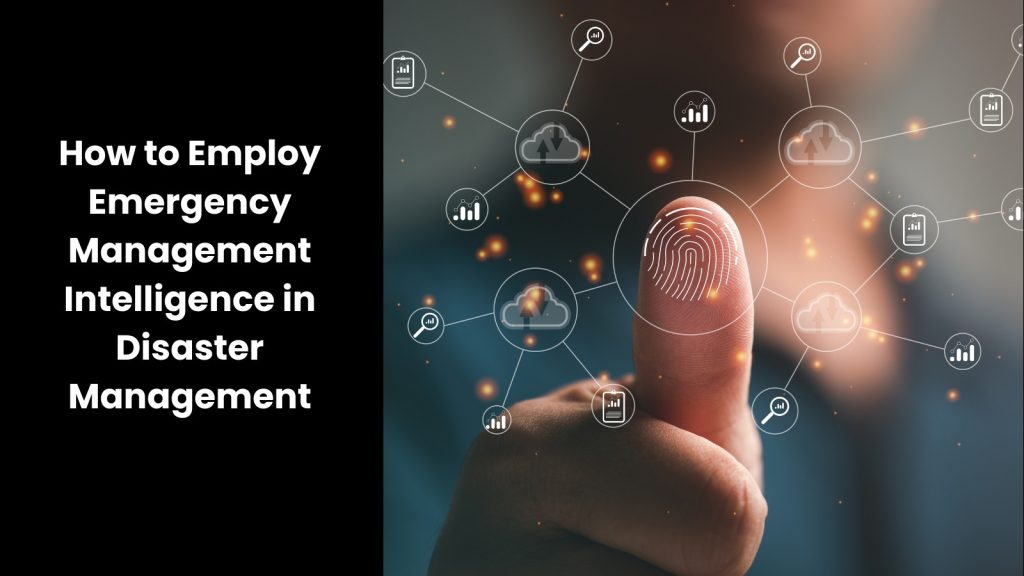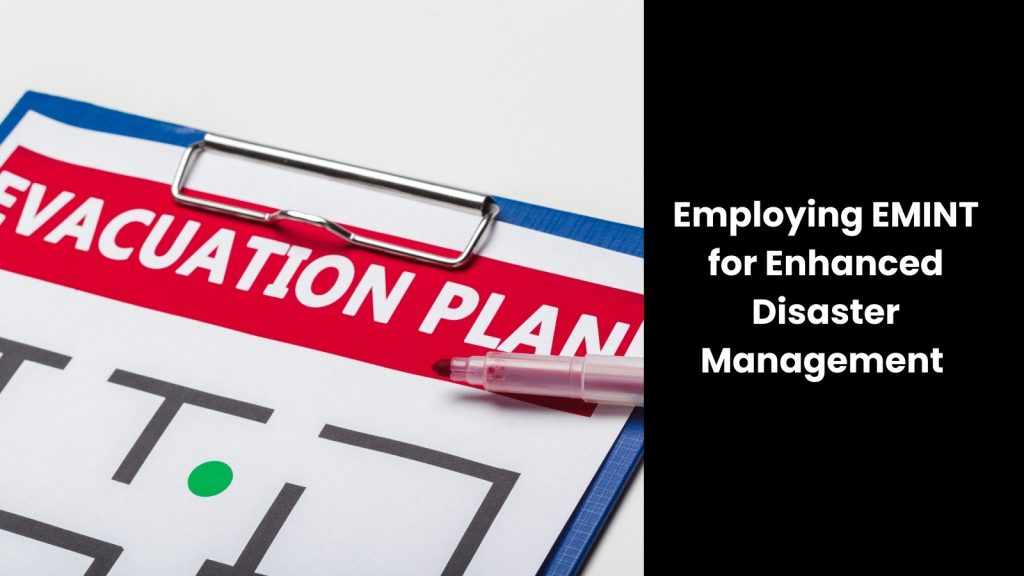From bushfires and cyclones to floods and droughts, Australia is no stranger to disaster. They have to deal with such disasters throughout the year, just like any other country in the world. No country can prevent these natural disasters, yet mitigating the impact of these events and ensuring community safety is surely the responsibility of Australia. However, this requires a proactive and well-coordinated approach. This is where emergency management intelligence comes into the limelight.
In this blog article, we discover the role of ‘Emergency Management Intelligence’ in Australia’s disaster management strategies.
What is EMINT?

- How can we better predict and respond to disasters to save more lives and reduce damage?
- Emergency Management Intelligence, or, as many know, EMINT, helps answer this question by using data and technology to improve disaster management. EMINT collects and analyses information from various sources, such as weather reports, satellite images, and social media updates.
- This information helps experts understand potential risks and hazards in different areas. With EMINT, we can develop early warning systems that alert people to evacuate before a disaster strikes.
- It also helps in planning and managing resources like food, water, medical supplies, and rescue teams, ensuring they reach the right places on time. During a disaster, the latter provides real-time updates and situational awareness through drones, satellite images, and other monitoring tools, helping decision-makers respond quickly and effectively.
- Even after such a disaster, this helps assess the damage and analyse the impact, guiding recovery efforts and future planning. As you can see, this is where a country like Australia can better prepare for, respond to, and recover from disasters, making communities safer and more resilient.
How to Employ Emergency Management Intelligence in Disaster Management

Real-Time Monitoring of Conditions
Real-time condition monitoring plays a crucial role in disaster management as it provides up-to-date information on the situation as it unfolds. This constant flow of information helps emergency responders make quick and accurate decisions.
In Australia, real-time monitoring is especially important due to the country’s susceptibility to various natural disasters like bushfires, floods, and cyclones. With real-time data, authorities can track the progress of these disasters, predict their paths, and warn affected communities.
EMINT helps with this by using technologies like drones, satellites, and sensors to gather real-time data. For instance, during bushfire season, EMINT can detect hot spots early and track the fire’s spread, allowing firefighters to respond more effectively.
In flood situations, real-time monitoring of water levels and weather conditions helps in issuing timely evacuation orders and deploying rescue teams. It also helps coordinate resources by providing a clear picture of what is happening on the ground.
Risk Assessment and Early Warning Systems
This understanding helps the authorities in Australia understand potential dangers and alert people before a disaster strikes. When it comes to risk assessment, we can see that it helps identify areas most likely to be affected by these disasters, allowing authorities to prepare and take preventive measures.
On the other hand, early warning systems provide timely alerts, giving people time to evacuate or take other safety actions. This is where the EMINT plays a crucial role in this process by analysing data from various sources, such as weather forecasts, satellite images, and historical records, to predict potential disasters.
For example, this can analyse weather patterns to predict cyclones and issue warnings to affected areas. During bushfire season, EMINT can assess the risk of fire spread based on temperature, wind speed, and dryness of vegetation, enabling timely warnings and preventive actions.
So, it is all about assessing the potential risks as they are!
Optimised Resource Allocation
How can authorities ensure that help reaches the right places quickly during disasters?
This is why optimal resource allocation is essential in disaster management. Do you agree?
It ensures that limited resources like food, water, medical supplies, and rescue teams reach those who need them the most. Efficient use of resources can make a huge difference in saving lives and reducing damage.
The latter technology helps achieve optimal resource allocation as it helps analyse data and predict where resources will be needed the most. EMINT can track a fire’s spread in real time and identify the areas at greatest risk, allowing firefighters and equipment to be deployed effectively.
Also, it can monitor water levels and predict which areas will be affected, ensuring that rescue teams and relief supplies are sent to the right locations. EMINT also helps coordinate the efforts of different agencies and organisations, avoiding duplication of efforts and ensuring a more unified response. By using advanced technologies like GIS, satellite imagery, and data analytics, EMINT provides a clear picture of the situation on the ground, enabling quick and informed decision-making.
Establishing Communication Strategies
It is the responsibility of Australian authorities to ensure everyone gets the right information quickly during disasters. Effective communication is a key player in disaster management. Do you know why?
That is because it ensures that accurate information reaches everyone involved, from emergency responders to the general public. When there is effective communication, it will help save lives and reduce panic.
Clear communication helps coordinate rescue efforts, provides updates on the disaster’s progress, and gives instructions on safety measures and evacuation procedures. EMINT supports this, as it uses various technologies to gather and disseminate information quickly and accurately.
For instance, EMINT can integrate data from weather forecasts, satellite images, and social media to create a comprehensive picture of the situation. This information can then be shared with emergency responders through reliable communication channels, ensuring they have the latest updates and can coordinate their efforts effectively.
EMINT also helps inform the public through early warning systems, social media alerts, and public announcements, keeping people informed about what actions to take. In remote or rural areas, where communication infrastructure might be weak, EMINT can use alternative methods like radio broadcasts and mobile alerts to ensure information reaches everyone.
This makes sure that everyone remains on the same page during disasters.
Building Evacuation Plans
It is not enough to foresee disasters if you cannot survive them strategically. This is why Australian authorities always put a significant weight on evacuation planning. This can save lives and reduce injuries, for sure.
These plans outline the safest routes and methods for leaving dangerous areas, ensuring that everyone knows where to go and what to do in an emergency. EMINT becomes a powerful arm in this due to its ability to consolidate data and technology to create and refine these plans.
EMINT analyses factors like population density, road networks, and the locations of safe shelters to design optimal evacuation routes. For example, during bushfire season, EMINT can predict the fire’s path and suggest the best evacuation routes to avoid the danger. In flood-prone areas, EMINT can monitor water levels and forecast which areas will be affected, allowing authorities to issue timely evacuation orders and guide people to safety.
With such robust technology in hand, Australia can ensure that people can evacuate quickly and safely during disasters. This will reduce the risk of injury and loss of life. Such a level of preparedness makes communities more resilient and better able to recover after a disaster.
Employing EMINT for Enhanced Disaster Management

We have to admit that there will be no stopping the natural disasters occurring in the world. But we can surely minimise the harm if we can make ourselves well-prepared for such situations. Robust prediction tools like EMINT can be integrated into your existing systems if you seek support from the right place.







